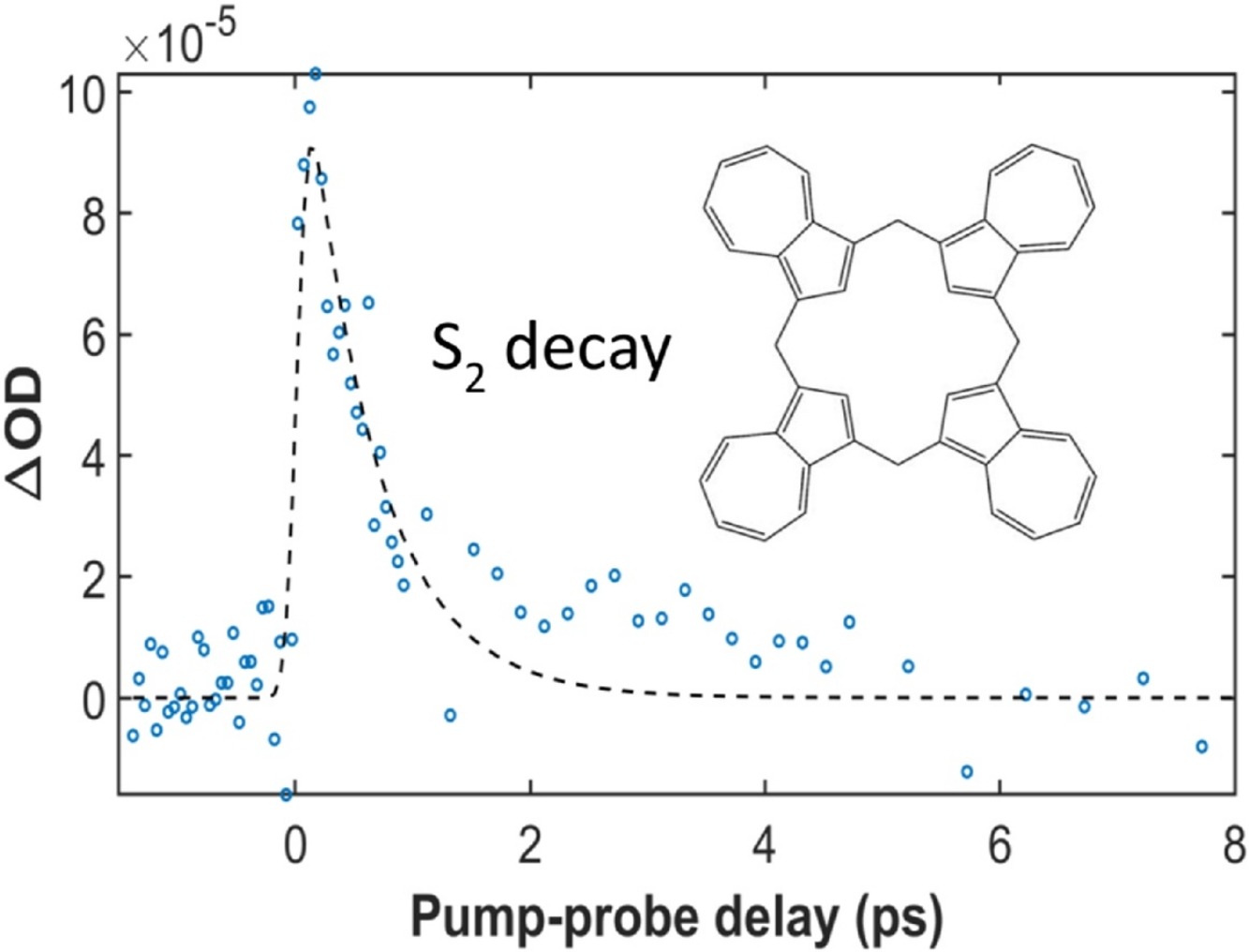
Paper published in J. Photoch. Photobio. A
Electronic spectroscopy and photophysics of calix[4]azulene
Amy L. Stevens, Colleen Yeow, Jonathan M. White, Siobhan J. Bradley, Kenneth P. Ghiggino, Ronald P. Steer
Calix[4]azulene is a non-alternant aromatic calixarene composed of four azulene chromophores linked by methylene groups. Its photochemical stability, photophysical properties and an analysis of its electronic spectra are reported using monomeric azulene as a known reference standard. The molecule is stable when excited in its visible and near uv absorptions and, unlike azulene, produces no measurable “anti-Kasha” fluorescence when excited to its second excited singlet state, S2. This lack of fluorescence places the lifetime of the initially excited, photochemically stable S2 species at less than 1 picosecond. A significant, bathochromic shift of the S2 absorption band system in the calixarene, and the appearance of an additional weak, broad absorption immediately to the red signals significant intramolecular chromophore interaction. Femtosecond transient absorption spectroscopy using excitation in this red-shifted tail of the S2 band system reveals a very weak transient signal most of which decays within one ps, but with suggestions of a slightly longer-lived underlying component. No longer-lived T1 triplet transient is observed. A complete analysis of the data using monomeric azulene as a reference suggests, following elimination of several alternate mechanisms, that the initially excited S2 species may be relaxing via a novel singlet-singlet fission process.
https://doi.org/10.1016/j.jphotochem.2020.112922

